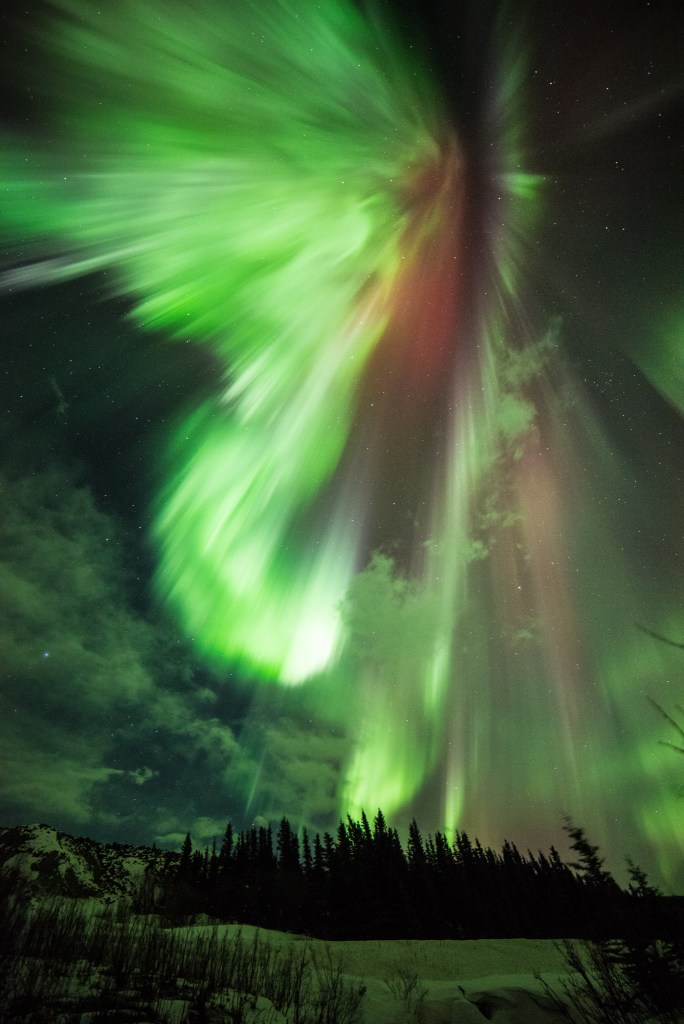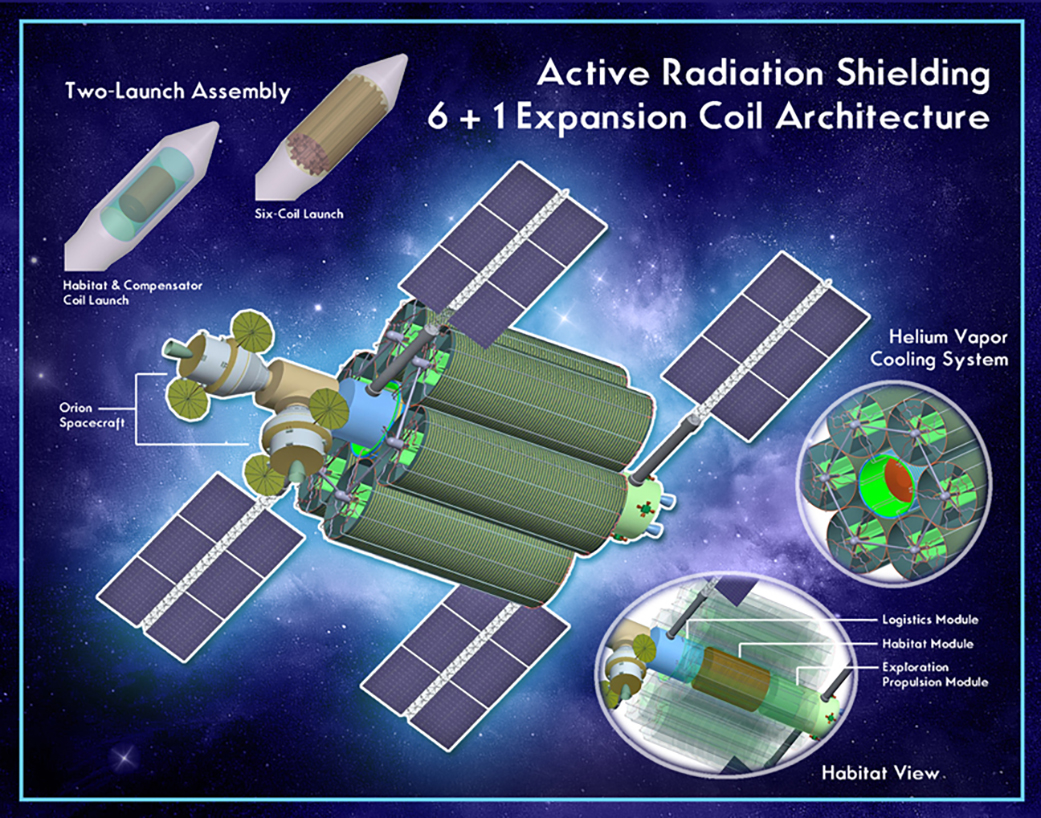Shayne Westover
NASA Johnson Space Center
NIAC 2012 Phase II Westover Radiation Protection and Architecture Final Report
Description
Active radiation shielding concepts have been studied for many decades as a means to protect crew from deep space radiation environments. These studies yield architectures that are significantly massive and too costly to launch and assemble in space largely due to the magnet size and field strength required to deflect galactic cosmic radiation (GCR) spectra and solar particle events (SPE) for meaningful crew protection in space. Since then state-of-the-art superconducting technology has made great strides in performance including higher temperature superconductivity (HTS) and greater current carrying capacity allowing for simpler magnet cooling systems and greater magnetic field strength per unit mass.
During phase 1 of this study, extensive Monte-Carlo analysis calculations to determine radiation-shielding efficiency for extended deep space missions such as Lagrangian points, Near Earth Asteroids, and Mars have shown that a combined system of active and passive radiation shielding constitutes the most promising solution to this issue. Large, ultra-light, expandable HTS coils are feasible and are capable of reducing radiation exposure of humans in the spacecraft habitat to acceptable levels over longer duration missions.
Ultra-light HTS coils offer significant deflection power for charged particles and due to the low amount of material from the HTS magnets, secondary particle production is kept at a low level.
During Phase I, the pros and cons of more than 20 potential coil configurations were analyzed by Advanced Magnet Lab (AML) personnel and INFN with the University of Perugia. Substantial progress has been made to develop a feasible solution for the required large HTS coils. The work performed showed that single layer expandable coils with diameters of 4 to 8 m and lengths of 15 to 20 m, arranged in a 6-around-1 configuration constitute the best solution among all concepts analyzed. The single compensator coil closely surrounds the habitat serving as a habitat thermal radiation shield for the outer coils and compensates for outer coil fringe fields trying to enter the habitat. AML has secured separate funding from Space Florida to demonstrate the concept of expandable HTS coils.
The phase 2 proposal effort will continue with the creative method of the “expandable” coil concept. The team will refine the structural concept to house such a coil assembly. This will include a more comprehensive structural loads analysis and structural design to manage field forces on each of the coils and the habitat. Concept design and analysis will include effects of the compensation coil on the entire system. The team will evaluate safety implications for the phase 1 coil concept including quench performance, fault scenarios and mitigation strategies.
A detailed Monte-Carlo simulation by INFN of Perugia will be conducted tracking particles through the magnetic field to calculate relevant dosemetric quantities for efficiency comparison with current passive protection methods. The active shielding performance analysis for phase 2 will include the refined magnet structural design and updates to the habitat cylinder ends according to a developed mission concept. In addition to the phase 1 configuration, concept scalability will be evaluated and the performance analyzed.
The concept in phase 1 largely focused on coil configurations, mass, fringe fields, and performance. Now a mission concept can be developed in phase 2 for the 6-around-1 coil configuration. A more detailed analysis will be conducted to determine number of launches needed to insert a habitat with coil system into deep space and determine the location of the assembly sequence (deep space or LEO). Evaluation will include required launch systems, launch packaging and fairing sizing, and assembly of such a coil system. The approach will attempt to minimize Extra Vehicular Activity (EVA) and robotics to assemble the protection system in space.































